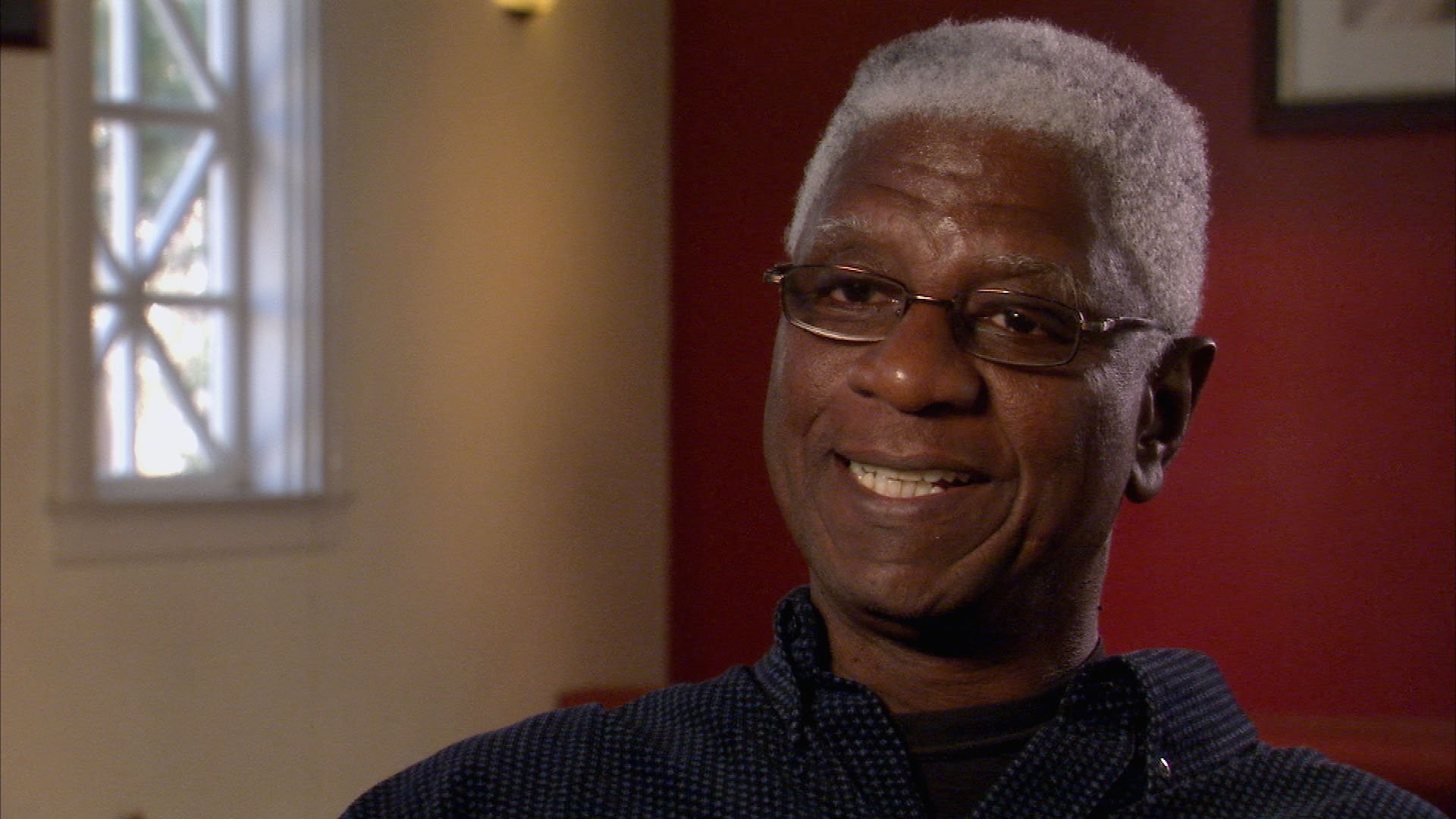
Ghanaian artist El Anatsui creates monumental assemblage sculptures woven from colorful, shiny objects, creating tactile curtains that seem to breathe on their own. The works sell routinely for more than one million dollars each at auction, but their beginnings are humble.
The works may be made from pieces of wood, metal, ceramic, and—most often—bottle caps, but they are not rigid at all. In fact, Anatsui says “as a matter of principle” the works don’t come with installation instructions: “since they are so free and so loose and so flexible, it would be difficult to have a specific format for any one of them at any time.”
The artist now lives in Nigeria. He employs local studio assistants from his neighborhood to create an environment of camaraderie and community.
Studio assistants working on El Anatsui’s massive assemblages. Photo: production still from the “Art in the Twenty-First Century” Season 6 episode, “Change.” © Art21, Inc. 2012.
In an exclusive interview with Art21 filmed back in 2012 as part of the Art in the Twenty-First Century series, Anatsui explained why he uses bottle caps from discarded liquor bottles as such a primary medium. “How did liquor come into my culture and what does it mean?” he asks in the film, before describing the system of European traders who descended upon Africa, ultimately trading drinks for slaves who were brought to America to “grow more cotton and sugar cane to make more drink”—a continuous a cycle of trauma and colonization.
Another reason the artist was drawn to the caps is because an accumulation of the colorful, shiny baubles appears to replicate the popular kente cloth fabric of Ghana, though he adds that this provided its own difficulty because viewers began to look at the works as textiles, an art form that is often derided and not appreciated as fine art.
The artist is adamant that his practice shouldn’t be considered a form of recycling, because he says it doesn’t pertain to the industrial process. Instead, the process is more akin to reincarnation. “I don’t, for instance, return the bottle caps back as mere bottle caps,” telling Art21. “They are given a new life and I make them not objects that do something utilitarian, but objects of contemplation.”
Right now through November 14, El Anatsui’s work is on view at the Conciergerie in Paris in a site specific exhibition curated by N’Goné Fall, general commissioner of the Africa2020 Season at the institution. Metal assemblages are installed surrounding the Hallway of Men-at-Arms in a winding route that alludes to the Seine, tracing a path through the medieval architecture of the city and its myriad cultural influences.
“The rivers flow, they do change their course,” the artist tells Art21, “And I think my work has principally been about change and non-fixity of things, the fact that things are there and they have to grow old and change and do all kinds of things.” Laughing he insists, “It’s not because I’m old now!”
Watch the video, which originally appeared as part of Art21’s Art in the Twenty-First Century series, below. “El Anatsui” is on view at the Conciergerie through November 14, 2021.
This is an installment of “Art on Video,” a collaboration between Artnet News and Art21 that brings you clips of newsmaking artists. A new series of the nonprofit Art21’s flagship series Art in the Twenty-First Century is available now on PBS. Catch all episodes of other series like New York Close Up and Extended Play and learn about the organization’s educational programs at Art21.org